Pedestrian routing
Overview
Pedestrian routing refers to the process of finding the best route for a pedestrian to travel from one location to another, taking into account factors such as pedestrian-only areas, sidewalks, crosswalks, and pedestrian-friendly intersections. It may also consider other factors such as stairs, which may be useful for wheelchair accessibility. OsmAnd always uses elevation data when calculating the estimated time of arrival (time to cover the distance) according to Naismith's rule.
To configure Pedestrian routing go to the Route parameters section of the Navigation settings.
Route Parameters - Walking
Pedestrian routing can be useful not only in urban areas, where pedestrians may encounter various obstacles when trying to get from one place to another. You can also use this routing type while jogging, hiking, and Nordic walking outside the city or in the mountains. Simply adjust routing parameters according to your needs.
- Android
- iOS
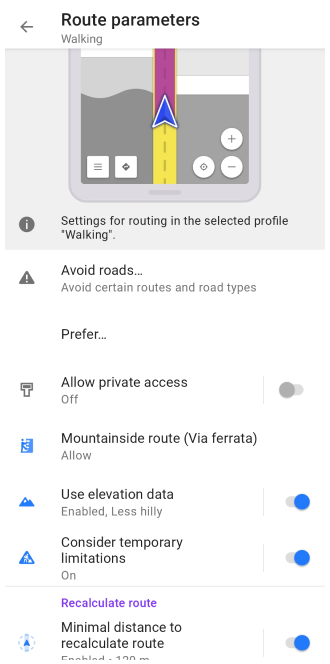
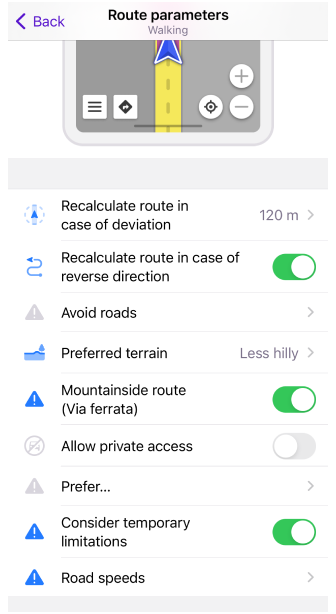
| Parameter | Description | Note |
|---|---|---|
| Avoid roads… | Select roads you want to avoid during navigation. You can either select a road on the map or choose road types from the list.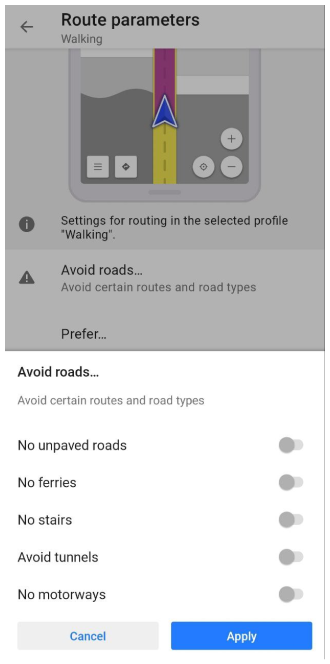 |
|
| Prefer… | You can choose what type of surface to prefer when building a route.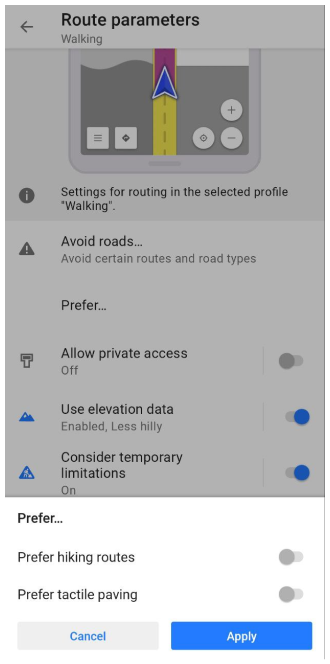 | You can choose between two options:
|
| Allow private access | Private access restrictions will be ignored when route calculating. | Tag private is used in OSM to describe restrictions on the use of highways and other transportation routes, as well as buildings, entrances, amenities, and leisure entities. |
| Use elevation data | Elevation data will be used in route calculation: penalties will be set for roads that differ from the selected type.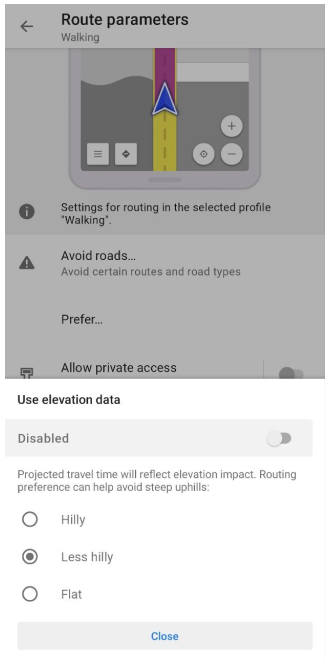 | This preference can help avoid steep hills or vice versa, prefer them. Using this option may be very helpful in pedestrian routing. Without elevation data the fastest route as on plain terrain will be calculated. |
| Mountainside route (Via ferrata) | Via ferrata routes will be used for routing when this option together with Use elevation data enabled. | Via ferrata is a mountain route equipped with fixed cables, stemples, ladders, and bridges. |